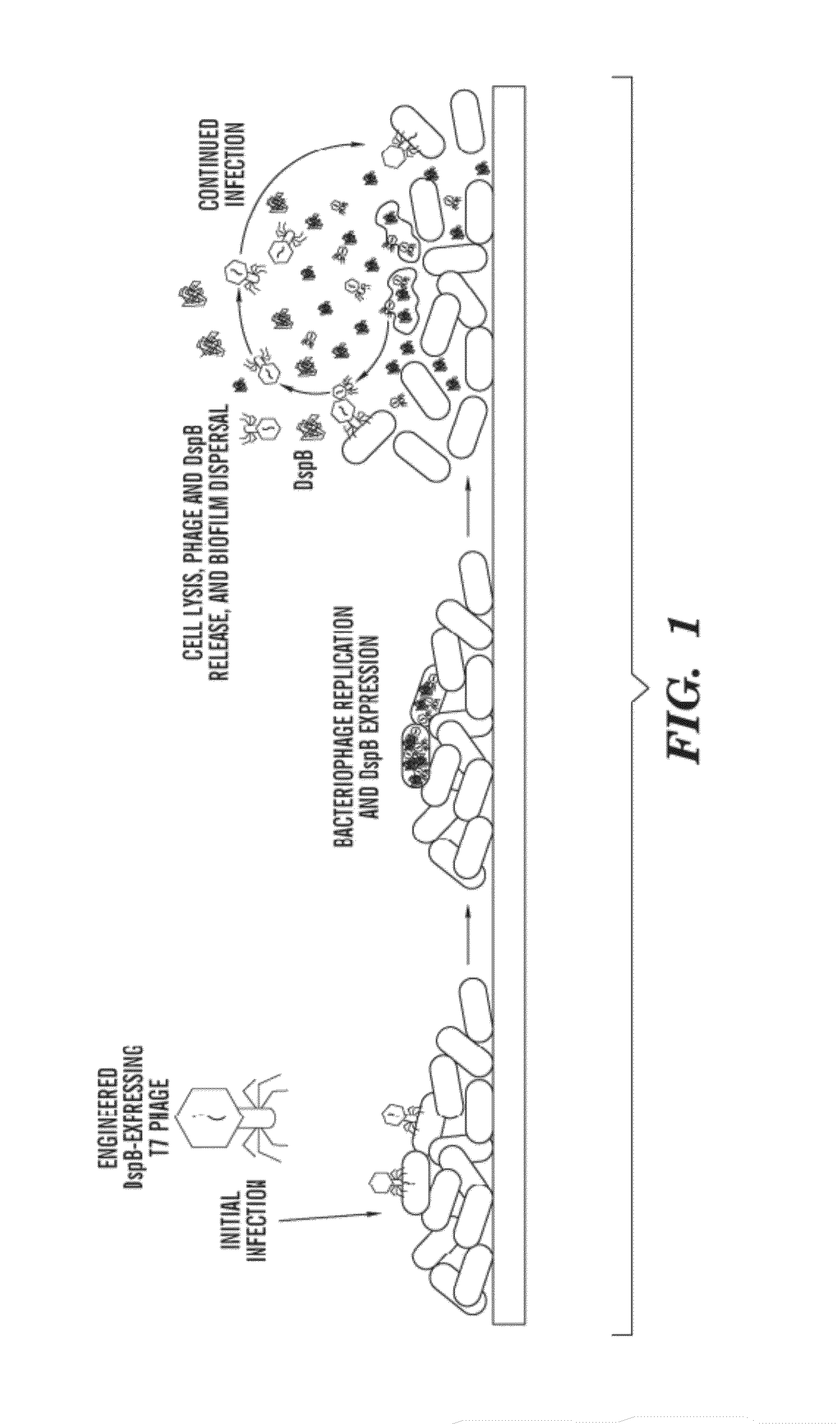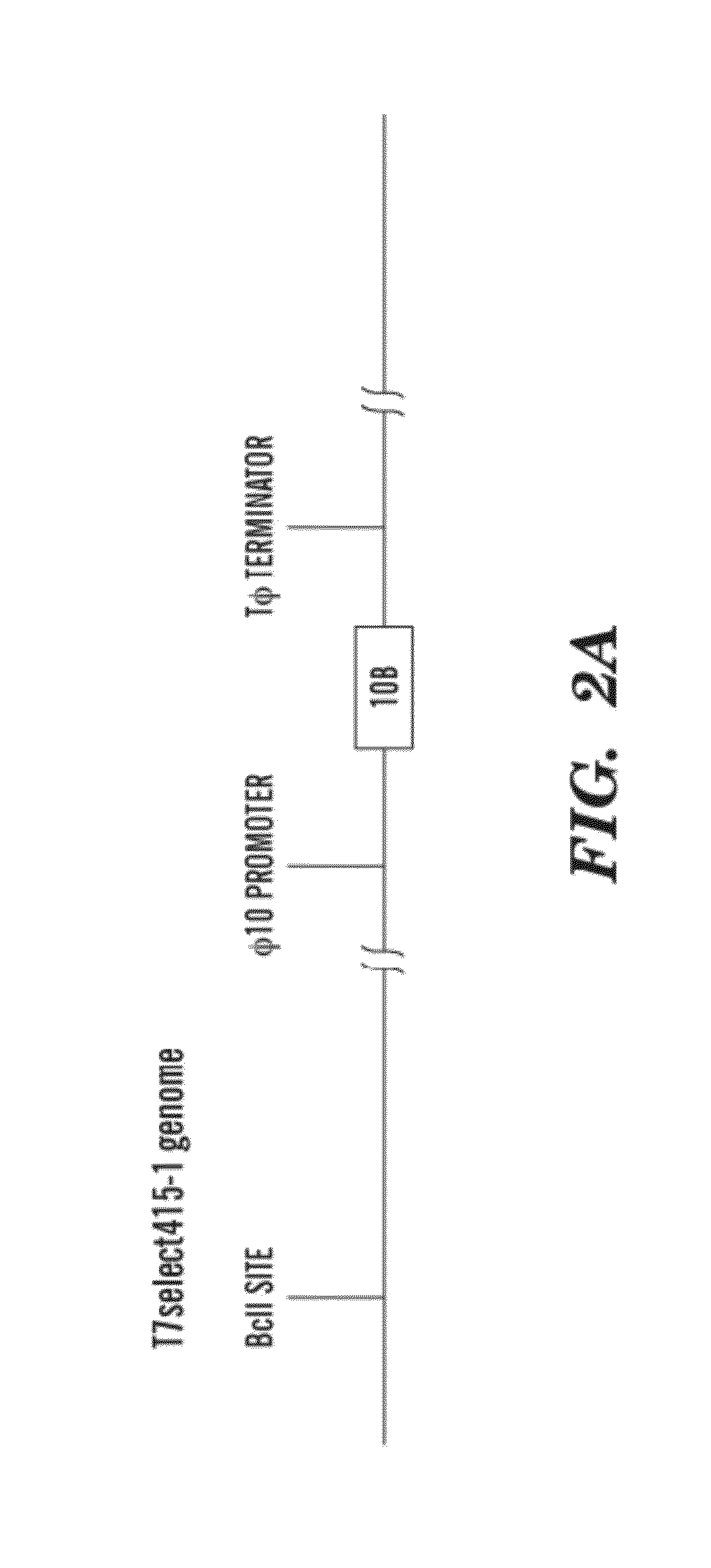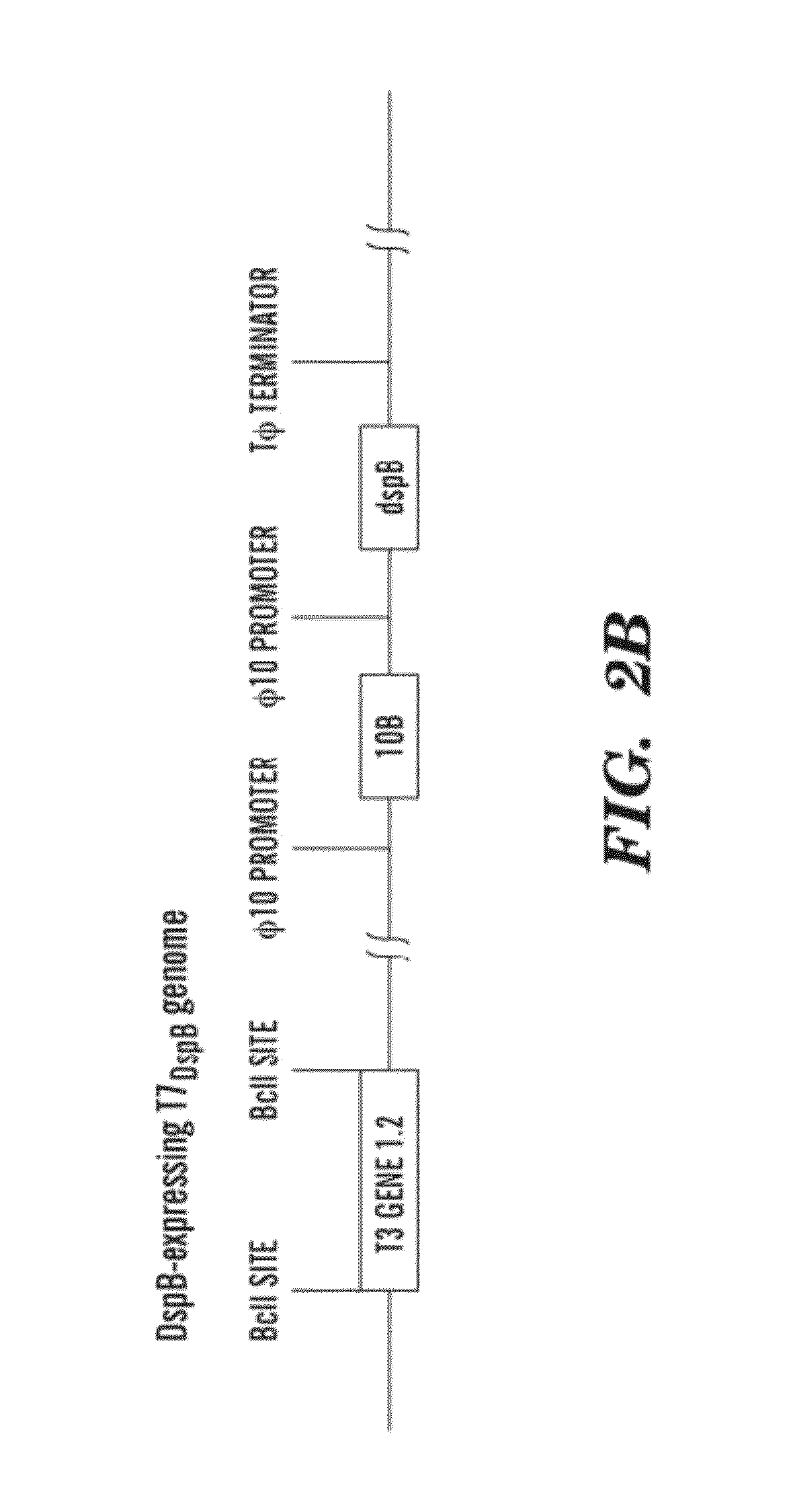Engineered enzymatically active bacteriophage and methods for dispersing biofilms
a technology of enzymatic activity and biofilm, which is applied in the direction of biocide, peptide/protein ingredient, transferase, etc., can solve the problem that bacteriophages are incapable of infecting anything other than specific strains of targets, and achieve the effect of reducing or eliminating multiple applications of compositions
- Summary
- Abstract
- Description
- Claims
- Application Information
AI Technical Summary
Benefits of technology
Problems solved by technology
Method used
Image
Examples
examples
[0116]Bacterial strains, bacteriophage, and chemicals. E. coli TG1 (F′traD36 lacIqΔ(lacZ) M15 proA+B+ / supE Δ(hsdM-mcrB)5 (rk- mk- McrB-) thi Δ(lac-proAB)) was obtained from Zymo Research (Orange, Calif.). The strain TG1 (lacI::kan) used to grow biofilm was created by one-step inactivation of the lacI gene by a kanamycin-resistance cassette (49). E. coli BL21 was obtained from NOVAGEN Inc. (San Diego, Calif.). Wild-type T7 (ATCC #BAA-1025-B2) and T3 (ATCC #11303-B3) were purchased from ATCC (Manassas, Va.). Standard chemicals were obtained from sources as described in Supporting Methods.
[0117]Construction and purification of engineered phage. Our engineered T7 phage was created using the T7SELECT415-1 phage display system (NOVAGEN) with standard molecular biology techniques. Instead of cloning DspB onto the phage surface, we designed the T7select phage to express DspB intracellularly during infection. The dspB gene was cloned from Actinobacillus actinomycetemcomitans genomic DNA (ATC...
PUM
| Property | Measurement | Unit |
|---|---|---|
| pH | aaaaa | aaaaa |
| pH | aaaaa | aaaaa |
| time | aaaaa | aaaaa |
Abstract
Description
Claims
Application Information
 Login to View More
Login to View More - R&D
- Intellectual Property
- Life Sciences
- Materials
- Tech Scout
- Unparalleled Data Quality
- Higher Quality Content
- 60% Fewer Hallucinations
Browse by: Latest US Patents, China's latest patents, Technical Efficacy Thesaurus, Application Domain, Technology Topic, Popular Technical Reports.
© 2025 PatSnap. All rights reserved.Legal|Privacy policy|Modern Slavery Act Transparency Statement|Sitemap|About US| Contact US: help@patsnap.com



